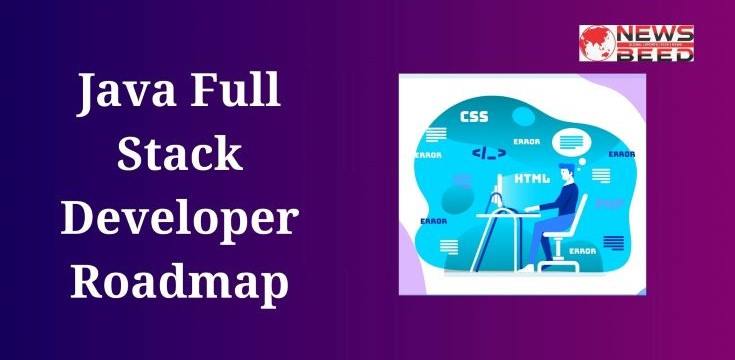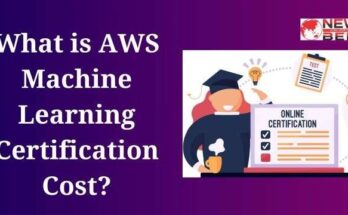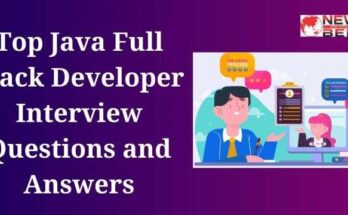Becoming a Java Full Stack Developer is an ambitious journey that spans across both the front-end and back-end development landscapes, encapsulating a broad spectrum of technologies and methodologies. This roadmap is structured to guide you through the sequential stages of learning, hands-on practice, and professional development required to excel as a Java Full Stack Developer. Let’s delve into the essentials, technologies, practices, and career strategies that will shape your path to becoming a proficient Java Full Stack Developer.
Understanding the Basics
Foundational Knowledge: Before diving into Java and full stack development, it’s essential to solidify your understanding of basic programming concepts such as variables, data types, control structures, and algorithms. Resources like “Introduction to Computer Science” courses can provide a comprehensive baseline.
Front-end Basics: The front-end is where the user interacts with your application. Start with HTML to structure your content, CSS for styling, and JavaScript for interactivity. Mastering these technologies allows you to create intuitive and responsive user interfaces. Projects like building a personal portfolio website can serve as excellent practice.
Back-end Fundamentals: The back-end consists of a server, application, and database. It’s where the logic of your web application resides. Start with Java—learn about its syntax, object-oriented programming (OOP) principles, exception handling, and data structures. Then, delve into servlets and Java Server Pages (JSP) to understand how Java handles HTTP requests and responses.
Database Mastery: Understanding how to store, retrieve, and manipulate data is crucial. Start with SQL databases like MySQL or PostgreSQL. Learn about database design, normalization, and SQL queries. Integrating a database with Java applications using JDBC (Java Database Connectivity) is a key skill for a full stack developer.
Intermediate Skills Development
Advanced Java Concepts: Enhance your Java skills by exploring advanced topics such as multithreading, generics, and Java 8 features like streams and lambda expressions. Frameworks like Spring Boot simplify the development of complex applications with features for dependency injection, RESTful services, and more.
Modern Front-end Technologies: As you become comfortable with the basics, introduce yourself to front-end frameworks and libraries like React, Angular, or Vue.js. These tools enhance your productivity and enable the development of dynamic, single-page applications (SPAs).
Building RESTful APIs: Understanding how to create APIs is essential for back-end development. Learn to build RESTful services with Java using Spring Boot. This includes handling JSON data, implementing CRUD operations, and understanding the principles of REST.
Security Practices: Security is paramount in full stack development. Familiarize yourself with concepts like authentication, authorization, OAuth, JWT (JSON Web Tokens), and how to secure your applications against common vulnerabilities like SQL injection and cross-site scripting (XSS).
DevOps and Deployment: A full stack developer should understand the basics of DevOps practices. Learn about version control systems like Git, continuous integration/continuous deployment (CI/CD) pipelines, containerization with Docker, and orchestration with Kubernetes. Knowing how to deploy applications to cloud platforms like AWS, Azure, or Heroku is also valuable.
Advanced Techniques and Specializations
Microservices Architecture: As applications grow, a microservices architecture can offer scalability and maintainability advantages. Learn how to design and develop independent, loosely coupled services, and how to manage them using Spring Cloud, Netflix OSS, or similar technologies.
Full Stack Application Development: With a solid foundation in both front-end and back-end technologies, it’s time to integrate these skills. Develop full stack applications that include a front-end SPA communicating with a back-end API, secured with proper authentication and connected to a database.
Testing and Quality Assurance: Writing tests is crucial for maintaining code quality. Learn about unit testing with JUnit and Mockito, integration testing, and end-to-end testing with tools like Selenium or Cypress for the front end. Understanding Test-Driven Development (TDD) practices can significantly enhance the quality of your applications.
Performance Optimization: Knowledge of how to analyze and optimize the performance of both front-end and back-end components of an application is important. Learn to use profiling tools, understand caching strategies, and optimize database queries and API responses.
Career Development and Lifelong Learning
Building a Portfolio: Start by creating a portfolio of projects that demonstrate your skills across the full stack. Include diverse projects that showcase your ability to solve problems, use different technologies, and work on both the front end and back end.
Open Source Contributions: Contributing to open source projects can enhance your skills, grow your network, and improve your visibility in the community. It’s a valuable experience that can teach you collaboration, version control, and coding standards practiced in real-world projects.
Networking and Community Engagement: Attend meetups, conferences, and webinars focused on Java and full stack development. Engaging with the community can provide insights into emerging technologies, best practices, and job opportunities.
Continuing Education: Technology evolves rapidly, and continuous learning is key to staying relevant. Follow industry blogs, subscribe to newsletters, and take advanced courses to keep up with new technologies and methodologies. Specializations in areas like cloud computing, machine learning, or blockchain can also open up new opportunities.
Job Search and Interview Preparation: When you feel ready to enter the job market, tailor your resume to highlight your full stack development skills and projects. Prepare for technical interviews by practicing coding problems on platforms like LeetCode and HackerRank. Understanding the company’s technology stack and preparing for system design interviews can also be beneficial.
You May Also Read:
What is Digital Marketing in Hindi
SEO Interview Questions and Answers
Conclusion:
Becoming a Java Full Stack Developer is a challenging yet rewarding journey that requires dedication, practice, and a passion for learning. By starting with the basics and progressively building your skills in front-end, back-end, database management, and deployment, you can become a versatile developer capable of building complex web applications. Engaging with the community, contributing to open source projects, and continuously updating your skills are crucial for long-term success. Remember, the path to becoming a full stack developer is not linear. Embrace challenges, learn from failures, and celebrate your successes along the way. Your journey to becoming a Java Full Stack Developer is a continuous learning process that will open doors to numerous opportunities and career paths.
Frequently Asked Questions (FAQs)
Q1. What is a Java Full Stack Developer?
Ans: A Java Full Stack Developer is a software developer with expertise in both front-end (client side) and back-end (server side) development using Java technologies. These developers are proficient in the entire depth of a computer application’s development and can work on the frontend, backend, database, and debugging of web applications or websites.
Q2. What skills are required to become a Java Full Stack Developer?
Ans: To become a Java Full Stack Developer, you should have the following skills:
- Frontend: Knowledge of HTML, CSS, and JavaScript. Familiarity with front-end frameworks/libraries like Angular or React is beneficial.
- Backend: Proficiency in Java, understanding of Spring Boot, Hibernate, and experience with RESTful web services.
- Database: Ability to work with relational databases such as MySQL or PostgreSQL, and NoSQL databases like MongoDB.
- Version Control/Git: Understanding of Git for version control.
- Basic DevOps: Knowledge of software containerization platforms like Docker and continuous integration/continuous deployment (CI/CD) pipelines.
Q3. Which technologies and frameworks should I learn?
Ans:
- Frontend: HTML5, CSS3, JavaScript, Angular, React.js
- Backend: Java, Spring Framework (including Spring Boot), Hibernate
- Database: MySQL, PostgreSQL, MongoDB
- DevOps and Tools: Docker, Jenkins, Git, Maven/Gradle
Q4. How can I learn Java Full Stack Development?
Ans: You can learn Java Full Stack Development through various resources:
- Online Courses: Platforms like Coursera, Udemy, and edX offer comprehensive courses on Java and full-stack development.
- Books: Books like “Spring in Action” and “Pro Angular” can be very helpful.
- Practice: Building projects and using websites like GitHub to explore and contribute to open-source projects.
- Bootcamps: Coding bootcamps specializing in full-stack development can offer structured learning paths.
Q5. What types of projects should I work on to improve my skills?
Ans: Work on projects that cover different aspects of web development, such as:
- A dynamic website using Spring Boot for the backend and Angular or React for the frontend.
- A CRUD (Create, Read, Update, Delete) application with a Java backend and a JavaScript frontend.
- An application that integrates with third-party services like Google Maps or Twitter API.
- A mobile-responsive web application.
Q6. What career opportunities are available for Java Full Stack Developers?
Ans: As a Java Full Stack Developer, you can pursue various roles, including:
- Full Stack Developer
- Web Developer
- Software Developer
- Backend Developer
- Frontend Developer Positions are available across industries, including technology, finance, healthcare, and more.
Q7. How do I stay updated with the latest Java Full Stack Development trends?
Ans: To stay updated, follow:
- Technology blogs and websites like Stack Overflow, Medium, and DEV.to.
- Influential developers and organizations on social media platforms like Twitter and LinkedIn.
- Attend webinars, workshops, and tech meetups.
- Participate in online forums and contribute to open-source projects.




